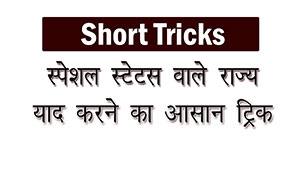Compound Interest Questions Answers
-
8. At what rate of compound interest per annum will a sum of Rs. 1200 become Rs. 1348.32 in 2 years
- 3%
- 4%
- 5%
- 6%
Answer And Explanation
Answer: Option D
Explanation:
Let Rate will be R%
\begin{aligned}
1200(1+\frac{R}{100})^2 = \frac{134832}{100} \\
(1+\frac{R}{100})^2 = \frac{134832}{120000} \\
(1+\frac{R}{100})^2 = \frac{11236}{10000} \\
(1+\frac{R}{100}) = \frac{106}{100} \\
=> R = 6\%
\end{aligned} -
9. The least number of complete years in which a sum of money put out at 20% compound interest will be more than doubled is
- 4 years
- 5 years
- 6 years
- 7 years
Answer And Explanation
Answer: Option A
Explanation:
As per question we need something like following
\begin{aligned}
P(1+\frac{R}{100})^n > 2P \\
(1+\frac{20}{100})^n > 2 \\
(\frac{6}{5})^n > 2 \\
\frac{6}{5} \times \frac{6}{5} \times \frac{6}{5}\times\frac{6}{5} > 2
\end{aligned}
So answer is 4 years
-
10. Simple interest on a certain sum of money for 3 years at 8% per annum is half the compound interest on Rs. 4000 for 2 years at 10% per annum. The sum placed on simple interest is
- Rs 1650
- Rs 1750
- Rs 1850
- Rs 1950
Answer And Explanation
Answer: Option B
Explanation:
\begin{aligned}
C.I. = (4000 \times(1+\frac{10}{100})^2 - 4000) \\
= 4000 * \frac{11}{10} * \frac{11}{10} - 4000 \\
= 840 \\
\text{So S.I. = } \frac{840}{2} = 420\\
\text{So Sum = } \frac{S.I. * 100}{R*T} \\
= \frac{420 * 100}{3*8} \\
= Rs 1750
\end{aligned} -
11. In what time will Rs.1000 become Rs.1331 at 10% per annum compounded annually
- 2 Years
- 3 Years
- 4 Years
- 5 Years
Answer And Explanation
Answer: Option B
Explanation:
Principal = Rs.1000;
Amount = Rs.1331;
Rate = Rs.10%p.a.
Let the time be n years then,
\begin{aligned}
1000(1+\frac{10}{100})^n = 1331 \\
(\frac{11}{10})^n = \frac{1331}{1000} \\
(\frac{11}{10})^3 = \frac{1331}{1000} \\
\end{aligned}
So answer is 3 years -
12. If the simple interest on a sum of money for 2 years at 5% per annum is Rs.50, what will be the compound interest on same values
- Rs.51.75
- Rs 51.50
- Rs 51.25
- Rs 51
Answer And Explanation
Answer: Option C
Explanation:
\begin{aligned}
S.I. = \frac{P*R*T}{100} \\
P = \frac{50*100}{5*2} = 500\\
Amount = 500(1+\frac{5}{100})^2 \\
500(\frac{21}{20} * \frac{21}{20}) \\
= 551.25 \\
C.I. = 551.25 - 500 = 51.25
\end{aligned} -
13. What will be the difference between simple and compound interest @ 10% per annum on the sum of Rs 1000 after 4 years
- Rs 62.10
- Rs 63.10
- Rs 64.10
- Rs 65.10
Answer And Explanation
Answer: Option C
Explanation:
\begin{aligned}
S.I. = \frac{1000*10*4}{100} = 400 \\
C.I. = [1000(1+\frac{10}{100})^4 - 1000] \\
= 464.10
\end{aligned}
So difference between simple interest and compound interest will be 464.10 - 400 = 64.10 -
14. The difference between simple and compound interests compounded annually on a certain sum of money for 2 years at 4% per annum is Rs 1. Find the sum
- Rs 600
- Rs 625
- Rs 650
- Rs 675
Answer And Explanation
Answer: Option B
Explanation:
Let the Sum be P
\begin{aligned}
S.I. = \frac{P*4*2}{100} = \frac{2P}{25}\\
C.I. = P(1+\frac{4}{100})^2 - P \\
= \frac{676P}{625} - P \\
= \frac{51P}{625} \\
\text{As, C.I. - S.I = 1}\\
=> \frac{51P}{625} - \frac{2P}{25} = 1 \\
=> \frac{51P - 50P}{625} = 1 \\
P = 625
\end{aligned}














